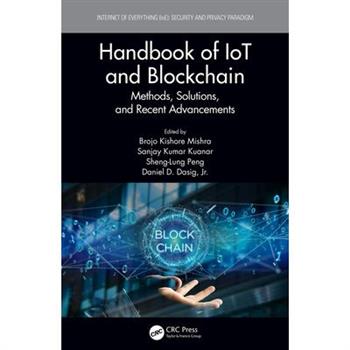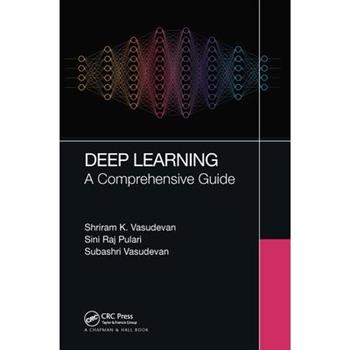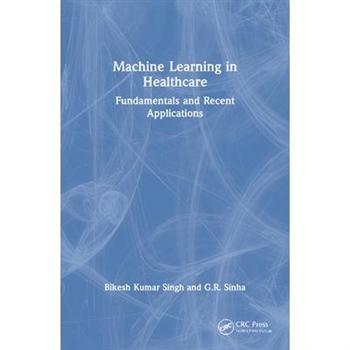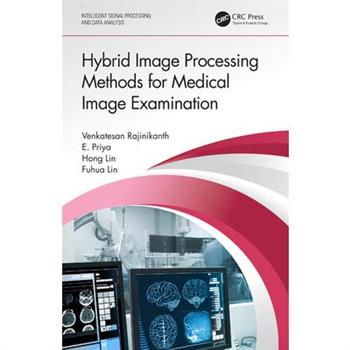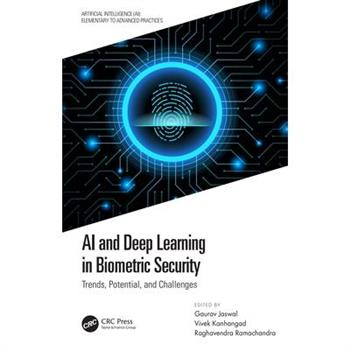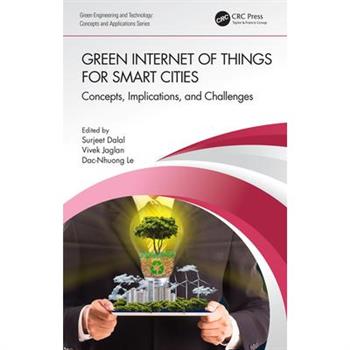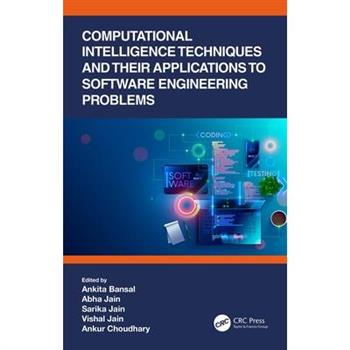Handbook of Iot and Blockchain
Handbook of IoT and Blockchain: Methods, solutions, and Recent Advancements includes contributions from around the globe on recent advances and findings in the domain of Internet of Things (IoT) and Blockchain. Chapters include theoretical analysis, practical implications, and extensive surveys with analysis on methods, algorithms, and processes for new product development.IoT and Blockchain are the emerging topics in the current manufacturing scenario.This handbook includes recent advances; showcases the work of research around the globe; offers theoretical analysis and practical implications; presents extensive surveys with analysis, new contributions, and proposals on methods, algorithms, and processes; and also covers recent advances from quantitative and qualitative articles, case studies, conceptual works, and theoretical backing.This handbook will be of interest to graduate students, researchers, academicians, institutions, and professionals that are interested in exploring the areas of IoT and Blockchain.
Artificial Intelligence for Internet of Things
The text comprehensively discusses design principles, modernization techniques, advanced developments in artificial intelligence. The text will be helpful for senior undergraduate, graduate students, and academic researchers in diverse engineering fields including electrical, electronics and communication, and computer.
Disruptive Developments in Biomedical Applications
This book covers advancements and future challenges in biomedical application development using disruptive technologies like AI, IoT and Signal Processing. Book is divided into 4 main sections namely medical image processing using AI, IoT and biomedical devices, signal processing and electronic health records, and advances with case studies.
Object Detection with Deep Learning Models
Object Detection with Deep Learning Models discusses recent advances in object detection and recognition using deep learning methods, which have achieved great success in the field of computer vision and image processing. It provides a systematic and methodical overview of the latest developments in deep learning theory and its applications to computer vision, illustrating them using key topics, including object detection, face analysis, 3D object recognition, and image retrieval.The book offers a rich blend of theory and practice. It is suitable for students, researchers and practitioners interested in deep learning, computer vision and beyond and can also be used as a reference book. The comprehensive comparison of various deep-learning applications helps readers with a basic understanding of machine learning and calculus grasp the theories and inspires applications in other computer vision tasks.Features: A structured overview of deep learning in object detection A diversified collection of applications of object detection using deep neural networks Emphasize agriculture and remote sensing domains Exclusive discussion on moving object detection
Deep Learning
Deep Learning: A Comprehensive Guide provides comprehensive coverage of Deep Learning (DL) and Machine Learning (ML) concepts. DL and ML are the most sought-after domains, requiring a deep understanding - and this book gives no less than that. This book enables the reader to build innovative and useful applications based on ML and DL. Starting with the basics of neural networks, and continuing through the architecture of various types of CNNs, RNNs, LSTM, and more till the end of the book, each and every topic is given the utmost care and shaped professionally and comprehensively.Key Features Includes the smooth transition from ML concepts to DL concepts Line-by-line explanations have been provided for all the coding-based examples Includes a lot of real-time examples and interview questions that will prepare the reader to take up a job in ML/DL right away Even a person with a non-computer-science background can benefit from this book by following the theory, examples, case studies, and code snippets Every chapter starts with the objective and ends with a set of quiz questions to test the reader's understanding Includes references to the related YouTube videos that provide additional guidance AI is a domain for everyone. This book is targeted toward everyone irrespective of their field of specialization. Graduates and researchers in deep learning will find this book useful.
Computer Applications in Engineering and Management
The book Computer Applications in Engineering and Management is about computer applications in management, electrical engineering, electronics engineering, and civil engineering. It covers the software tools for office automation, introduces the basic concepts of database management, and provides an overview about the concepts of data communication, internet, and e-commerce. Additionally, the book explains the principles of computing management used in construction of buildings in civil engineering and the role of computers in power grid automation in electronics engineering.Features Provides an insight to prospective research and application areas related to industry and technology Includes industry-based inputs Provides a hands-on approach for readers of the book to practice and assimilate learning This book is primarily aimed at undergraduates and graduates in computer science, information technology, civil engineering, electronics and electrical engineering, management, academicians, and research scholars.
Cloud Security
This book is written with an intension to provide a thorough and detailed discussion on various fundamental aspects of cloud security. It provides an insight in to cloud computing including definition, history, characteristics, service models, cloud deployment models, key technologies, service platforms and challenges.
Bioinformatics Tools and Big Data Analytics for Patient Care
Nowadays, raw biological data can be easily stored as databases in computers but extracting the required information is the real challenge for researchers. For this reason, bioinformatics tools perform a vital role in extracting and analyzing information from databases. Bioinformatics Tools and Big Data Analytics for Patient describes the applications of bioinformatics, data management, and computational techniques in clinical studies and drug discovery for patient care. The book gives details about the recent developments in the fields of artificial intelligence, cloud computing, and data analytics. It highlights the advances in computational techniques used to perform intelligent medical tasks.Features: Presents recent developments in the fields of artificial intelligence, cloud computing, and data analytics for improved patient care. Describes the applications of bioinformatics, data management, and computational techniques in clinical studies and drug discovery. Summarizes several strategies, analyses, and optimization methods for patient healthcare. Focuses on drug discovery and development by cloud computing and data-driven research The targeted audience comprises academics, research scholars, healthcare professionals, hospital managers, pharmaceutical chemists, the biomedical industry, software engineers, and IT professionals.
Cyber-Physical Systems
Cyber-Physical Systems: A Comprehensive Guide explores the complete sys-tem perspective, underlying theories, modelling, and the applications of Cyber Physical Systems (CPS). It aims to cover all topics ranging from discussion of ru-diments of the system, efficient management, to recent research challenges and issues. Editors aim to present the book in a self-sufficient manner and to achieve this, the book has been edited to include all the aspects of CPS. The book fo-cuses on the concept map of CPS including latest technological interventions; issues, challenges, and the integration of CPS with IoT & Big Data Analytics. This aims to bring together unique contributions on cyber-physical systems research and education with applications in industrial, agriculture, and medical domains. The main aim of the book is to provide a roadmap to the latest advancements to provide optimal solutions in the field of CPS.Features- Coverage of rudiments of the subject- Discussion of recent advancements in the associated field- Considers an audience of diverse domains- Suitable for students (both UG and PG level) and researchers in the field of CPSThis book aims to present the emergence of Cyber Physical Systems in response to revolutionary advancements in IoT. While discussing the associated challenges, it also endeavors to devise efficient models which are competent to address these challenges. This book aims to cater to researchers and academicians working in the related field of CPS.
Security Analytics
This book discusses a range of topics from information security to cryptography, mobile application attacks to Digital forensics and from Cybersecurity to Blockchain. The goal of the book is to provide a 360-degree view of cybersecurity to the readers with demonstration of practical applications.
Big Data Analysis for Green Computing
This book focuses on big data in business intelligence, data management, machine learning, cloud computing, and smart cities. It also provides an interdisciplinary platform to present and discuss recent innovations, trends, and concerns in the fields of big data and analytics.Big Data Analysis for Green Computing: Concepts and Applications presents the latest technologies and covers the major challenges, issues, and advances of big data and data analytics in green computing. It explores basic as well as high-level concepts. It also includes the use of machine learning using big data and discusses advanced system implementation for smart cities.The book is intended for business and management educators, management researchers, doctoral scholars, university professors, policymakers, and higher academic research organizations.
Deep Learning for Crack-Like Object Detection
Computer vision-based crack-like object detection has many useful applications, such as inspecting/monitoring pavement surface, underground pipeline, bridge cracks, railway tracks etc. However, in most contexts, cracks appear as thin, irregular long-narrow objects, and often are buried in complex, textured background with high diversity which make the crack detection very challenging. During the past a few years, deep learning technique has achieved great success and has been utilized for solving a variety of object detection problems.This book discusses crack-like object detection problem comprehensively. It starts by discussing traditional image processing approaches for solving this problem, and then introduces deep learning-based methods. It provides a detailed review of object detection problems and focuses on the most challenging problem, crack-like object detection, to dig deep into the deep learning method. It includes examples of real-world problems, which are easy to understand and could be a good tutorial for introducing computer vision and machine learning.
Cognitive IoT
This book contains different research area of Cognitive IoT and explains how Machine learning algorithms can be applied for Cognitive IoT with applications (Covid-19), student performance evaluation, human healthcare for chronic disease prediction, wearable sensors energy optimization, and in farming.
Advanced Computational Methods in Mechanical and Materials Engineering
This book provides in-depth knowledge to solve engineering, geometrical, mathematical, and scientific problems with the help of advanced computational methods with focus on mechanical and materials engineering. It covers pertinent topics under sections on design and fluids, thermal engineering and materials engineering.
Disruptive Trends in Computer Aided Diagnosis
This book is an attempt to collate novel techniques and methodologies in the domain of content- based image classification and deep learning/machine learning techniques to design efficient computer aided diagnosis architecture. It is aimed to highlight new challenges and probable solutions.
Internet of Energy for Smart Cities
The focus of this book is on using the machine learning approaches to present various solutions for IoE network in smart cities to solve various research gaps such as demand response management, resource management and effective utilization of the underlying ICT network. It helps build the technical understanding for the reader.
Integration of Wsns Into Internet of Things
The internet has gone from an internet of people, to an Internet of Things. This has brought forth strong levels of complexity in handling interoperability that involves the integrating of WSNs into IoT.
Iot in Healthcare Systems
Implementing new information technologies into the healthcare sector can provide alternatives to managing patients' health records, systems, and improving the quality of care received. This book provides an overview of Internet of Things (IoT) technologies related to the healthcare field and covers the main advantages and disadvantages along with industry case studies. This edited volume covers required standardization and interoperability initiatives, various Artificial Intelligence and Machine Learning algorithms, and discusses how health technology can meet the challenge of improving quality of life regardless of social and financial status, gender, age, and location. The book presents real-time applications and case studies in the fields of engineering, computer science, IoT, and healthcare and provides many examples of successful IoT projects.The target audience for this edited volume includes researchers, practitioners, students, as well as key stakeholders involved in and working on healthcare engineering solutions.
Computational Science and its Applications
Computational science seeks to gain understanding of science through the use and analysis of mathematical models on high performance computers. The topics covered are gravitational waves, applications of wavelet and fractals, modeling by partial differential equations on flat structure as, production of natural calamities and diseases, etc
Blockchain for IoT
This book provides the basic concepts of blockchain technology and its applications to varied domains catering to socio-technical fields. It also introduces intelligent blockchain platforms by way of infusing elements of computational intelligence into blockchain technology.
Transformation in Healthcare with Emerging Technologies
The book, Transformation in Healthcare with Emerging Technologies, presents healthcare industrial revolution based on service aggregation and virtualisation that can transform the healthcare sector with the aid of technologies such as Artificial Intelligence (AI), Internet of Things (IoT), Bigdata and Blockchain. These technologies offer fast communication between doctors and patients, protected transactions, safe data storage and analysis, immutable data records, transparent data flow service, transaction validation process, and secure data exchanges between organizations.Features: - Discusses the Integration of AI, IoT, big data and blockchain in healthcare industry- Highlights the security and privacy aspect of AI, IoT, big data and blockchain in healthcare industry- Talks about challenges and issues of AI, IoT, big data and blockchain in healthcare industry- Includes several case studiesIt is primarily aimed at graduates and researchers in computer science and IT who are doing collaborative research with the medical industry. Industry professionals will also find it useful.
Machine Learning in Healthcare
Artificial intelligence (AI) and machine learning (ML) techniques play an important role in our daily lives by enhancing predictions and decision-making for the public in several fields such as financial services, real estate business, consumer goods, social media, etc. Despite several studies that have proved the efficacy of AI/ML tools in providing improved healthcare solutions, it has not gained the trust of health-care practitioners and medical scientists. This is due to poor reporting of the technology, variability in medical data, small datasets, and lack of standard guidelines for application of AI. Therefore, the development of new AI/ML tools for various domains of medicine is an ongoing field of research. Machine Learning in Healthcare: Fundamentals and Recent Applications discusses how to build various ML algorithms and how they can be applied to improve healthcare systems. Healthcare applications of AI are innumerable: medical data analysis, early detection and diagnosis of disease, providing objective-based evidence to reduce human errors, curtailing inter- and intra-observer errors, risk identification and interventions for healthcare management, real-time health monitoring, assisting clinicians and patients for selecting appropriate medications, and evaluating drug responses. Extensive demonstrations and discussion on the various principles of machine learning and its application in healthcare is provided, along with solved examples and exercises. This text is ideal for readers interested in machine learning without any background knowledge and looking to implement machine-learning models for healthcare systems.
Hybrid Image Processing Methods for Medical Image Examination
In view of better results expected from examination of medical datasets (images) with hybrid (integration of thresholding and segmentation) image processing methods, this work focuses on implementation of possible hybrid image examination techniques for medical images. It describes various image thresholding and segmentation methods which are essential for the development of such a hybrid processing tool. Further, this book presents the essential details, such as test image preparation, implementation of a chosen thresholding operation, evaluation of threshold image, and implementation of segmentation procedure and its evaluation, supported by pertinent case studies. Aimed at researchers/graduate students in the medical image processing domain, image processing, and computer engineering, this book: Provides broad background on various image thresholding and segmentation techniques Discusses information on various assessment metrics and the confusion matrix Proposes integration of the thresholding technique with the bio-inspired algorithms Explores case studies including MRI, CT, dermoscopy, and ultrasound images Includes separate chapters on machine learning and deep learning for medical image processing
Green Computing and Predictive Analytics for Healthcare
Green Computing and Predictive Analytics for Healthcare excavates the rudimentary concepts of Green Computing, Big Data and the Internet of Things along with the latest research development in the domain of healthcare. It also covers various applications and case studies in the field of computer science with state-of-the-art tools and technologies. The rapid growth of the population is a challenging issue in maintaining and monitoring various experiences of quality of service in healthcare. The coherent usage of these limited resources in connection with optimum energy consumption has been becoming more important. The major healthcare nodes are gradually becoming Internet of Things-enabled, and sensors, work data and the involvement of networking are creating smart campuses and smart houses. The book includes chapters on the Internet of Things and Big Data technologies.Features: Biomedical data monitoring under the Internet of Things Environment data sensing and analyzing Big data analytics and clustering Machine learning techniques for sudden cardiac death prediction Robust brain tissue segmentation Energy-efficient and green Internet of Things for healthcare applications Blockchain technology for the healthcare Internet of Things Advanced healthcare for domestic medical tourism system Edge computing for data analytics This book on Green Computing and Predictive Analytics for Healthcare aims to promote and facilitate the exchange of research knowledge and findings across different disciplines on the design and investigation of healthcare data analytics. It can also be used as a textbook for a master's course in biomedical engineering. This book will also present new methods for medical data evaluation and the diagnosis of different diseases to improve quality-of-life in general and for better integration of Internet of Things into society.Dr. Sourav Banerjee is an Assistant Professor at the Department of Computer Science and Engineering of Kalyani Government Engineering College, Kalyani, West Bengal, India. His research interests include Big Data, Cloud Computing, Distributed Computing and Mobile Communications.Dr. Chinmay Chakraborty is an Assistant Professor at the Department of Electronics and Communication Engineering, Birla Institute of Technology, Mesra, India. His main research interests include the Internet of Medical Things, WBAN, Wireless Networks, Telemedicine, m-Health/e-Health and Medical Imaging. Dr. Kousik Dasgupta is an Assistant Professor at the Department of Computer Science and Engineering, Kalyani Government Engineering College, India. His research interests include Computer Vision, AI/ML, Cloud Computing, Big Data and Security.
AI and Deep Learning in Biometric Security
This book provides an in-depth overview of artificial intelligence and deep learning approaches with case studies to solve problems associated with biometric security such as authentication, indexing, template protection, spoofing attack detection, ROI detection, gender classification etc. This text highlights a showcase of cutting-edge research on the use of convolution neural networks, autoencoders, recurrent convolutional neural networks in face, hand, iris, gait, fingerprint, vein, and medical biometric traits. It also provides a step-by-step guide to understanding deep learning concepts for biometrics authentication approaches and presents an analysis of biometric images under various environmental conditions. This book is sure to catch the attention of scholars, researchers, practitioners, and technology aspirants who are willing to research in the field of AI and biometric security.
Advances in Mathematical and Computational Modeling of Engineering Systems
The text covers a wide range of topics such as mathematical modeling of crop pest control management, water resources management, impact of anthropogenic activities on atmospheric carbon dioxide concentrations, impact of climate changes on melting of glaciers and polar bear populations, dynamics of slow-fast predator-prey system and spread and control of HIV epidemic. It emphasizes the use of mathematical modeling to investigate the fluid flow problems including the breaking of viscoelastic jet, instability arising in nanofiber, flow in an annulus channel, and thermal instability in nano-fluids in a comprehensive manner. This book will be a readily accessible source of information for the students, researchers and policymakers interested in the application of mathematical and computational modeling techniques to investigate various biological and engineering phenomena.Features Focuses on the current modeling and computational trends to investigate various ecological, epidemiological, and engineering systems. Presents the mathematical modeling of a wide range of ecological and environmental issues including crop pest control management, water resources management, the effect of anthropogenic activities on atmospheric carbon dioxide concentrations, and impact of climate changes on melting of glaciers and polar bear population. Covers a wide range of topics including the breaking of viscoelastic jet, instability arising in nanofiber, flow in an annulus channel, and thermal instability in nano-fluids. Examines evolutionary models i.e., models of time-varying processes. Highlights the recent developments in the analytical methods to investigate the nonlinear dynamical systems. Showcases diversified applications of computational techniques to solve practical biological and engineering problems. The book focuses on the recent research developments in the mathematical modeling and scientific computing of biological and engineering systems. It will serve as an ideal reference text for senior undergraduate, graduate students, and researchers in diverse fields including ecological engineering, environmental engineering, computer engineering, mechanical engineering, mathematics, and fluid dynamics.
Fundamentals of Internet of Things
The book emphasizes on building fundamentals of IoT networks by leveraging important and relevant concepts from Signal Processing, Communications, Networks and Machine learning. It focuses on IoT protocols, energy harvesting, control optimization, clustering, data fusion, data analytics, localization, fog computing, etc.
Smart and Secure Internet of Healthcare Things
Internet of Healthcare Things (IoHT) is an Internet of Things (IoT)-based solution that includes a network architecture which allows the connection between a patient and healthcare facilities. This book covers various research issues of smart and secure IoHT, aimed at providing solutions for remote healthcare monitoring using pertinent techniques. Applications of machine learning techniques and data analytics in IoHT, along with the latest communication and networking technologies and cloud computing, are also discussed. Features: Provides a detailed introduction to IoHT and its applications Reviews underlying sensor and hardware technologies Includes recent advances in the IoHT, such as remote healthcare monitoring and wearable devices Explores applications of data analytics/data mining in IoHT, including data management and data governance Focuses on regulatory and compliance issues in IoHT This book is intended for graduate students and researchers in Bioinformatics, Biomedical Engineering, Big Data and Analytics, Data Mining, and Information Management, IoT and Computer and Electrical Engineering.
Spaceborne Synthetic Aperture Radar Remote Sensing
This book provides basic and advanced concepts of synthetic aperture radar (SAR), PolSAR, InSAR, PolInSAR, and all necessary information about various applications and analysis of data of multiple sensors. It includes information on SAR remote sensing, data processing, and separate applications of SAR technology, compiled in one place. It will help readers to use active microwave imaging sensor-based information in geospatial technology and applications.This book: Covers basic and advanced concepts of synthetic aperture radar (SAR) remote sensing Introduces spaceborne SAR sensors Discusses applications of SAR remote sensing in earth observation Explores utilization of SAR data for solid earth, ecosystem, and cryosphere, including imaging of extra-terrestrial bodies Includes PolSAR and PolInSAR for aboveground forest biomass retrieval, as well as InSAR and PolSAR for snow parameters retrieval This book is aimed at researchers and graduate students in remote sensing, photogrammetry, geoscience, image processing, agriculture, environment, forestry, and image processing.
Energy Harvesting
Energy Harvesting: Enabling IoT Transformations gives insight into the emergence of energy harvesting technology and its integration with IoT-based applications. The book educates the reader on how energy is harvested from different sources, increasing the effectiveness, efficiency and lifetime of IoT devices.- Discusses the technology and practices involved in energy harvesting for biomedical, agriculture and automobile industries- Compares the performance of IoT-based devices with and without energy harvesting for different applications- Studies the challenges and issues in the implementation of EH-IoT- Includes case studies on energy-harvesting approach for solar, thermal and RF sources- Analyzes the market and business opportunities for entrepreneurs in the field of EH-IoT.This book is primarily aimed at graduates and research scholars in wireless sensor networks. Scientists and R&D workers in industry will also find this book useful.
Pde Toolbox Primer for Engineering Applications with Matlab(r) Basics
Partial differential equations (PDEs) describe technological phenomena and processes used for the analysis, design, and modeling of technical products. Solutions of spatial and transient PDEs are realized by using the PDE Toolbox included in the MATLAB(R) software. MATLAB(R) is introduced here as an essential foundation for PDE, and the Modeler of the PDE Toolbox, with appropriate explanatory solutions, is applied to engineering problems in mechanics, heat/mass transfer, tribology, materials science, physics, and biotechnology. The appendixes contain collections of commands and functions used to solve actual engineering problems.FEATURES Includes the PDE Modeler interface with example solutions of two- and three-dimensional PDEs Presents methodologies for all types of PDEs as representative of any engineering problem Describes the ordinate differential equation (ODE) solver for initial value and boundary value problems (IVP and BVP) through practical examples from mechanics and the thermodynamic properties of materials Covers the basics of MATLAB(R) to solve both ODEs and PDEs Reviews spatially the one-dimensional PDE solver with actual engineering examples PDE Toolbox Primer for Engineering Applications with MATLAB(R) Basics is aimed at scientists, students, professionals, practitioners, self-taught readers, and researchers who need concise and clear information to study and apply MATLAB(R) software and the PDE Toolbox in engineering.
Unleashing the Art of Digital Forensics
This book is intended to make the reader aware of the constraints and considerations that apply during a forensic examination in law enforcement and in the private sector. It is aimed primarily at graduates, postgraduates and researchers in digital forensics and cybersecurity.
Swarm Intelligence and Evolutionary Computation
The aim of this book is to present and analyse theoretical advances and also emerging practical applications of swarm and evolutionary intelligence. It comprises nine chapters. Chapter 1 provides a theoretical introduction of the computational optimization techniques regarding the gradient-based methods such as steepest descent, conjugate gradient, newton and quasi-Newton methods and also the non-gradient methods such as genetic algorithm and swarm intelligence algorithms. Chapter 2, discusses evolutionary computation techniques and genetic algorithm. Swarm intelligence theory and particle swarm optimization algorithm are reviewed in Chapter 3. Also, several variations of particle swarm optimization algorithm are analysed and explained such as Geometric PSO, PSO with mutation, Chaotic PSO with mutation, multi-objective PSO and Quantum mechanics - based PSO algorithm. Chapter 4 deals with two essential colony bio-inspired algorithms: Ant colony optimization (ACO) and Artificial bee colony (ABC). Chapter 5, presents and analyses Cuckoo search and Bat swarm algorithms and their latest variations. In chapter 6, several other metaheuristic algorithms are discussed such as: Firefly algorithm (FA), Harmony search (HS), Cat swarm optimization (CSO) and their improved algorithm modifications. The latest Bio-Inspired Swarm Algorithms are discussed in chapter 7, such as: Grey Wolf Optimization (GWO) Algorithm, Whale Optimization Algorithm (WOA), Grasshopper Optimization Algorithm (GOA) and other algorithm variations such as binary and chaotic versions. Chapter 8 presents machine learning applications of swarm and evolutionary algorithms. Illustrative real-world examples are presented with real datasets regarding neural network optimization and feature selection, using: genetic algorithm, Geometric PSO, Chaotic Harmony Search, Chaotic Cuckoo Search, and Evolutionary Algorithm and also crime forecasting using swarm optimized SVM. In chapter 9, applications of swarm intelligence on deep long short-term memory (LSTM) networks and Deep Convolutional Neural Networks (CNNs) are discussed, including LSTM hyperparameter tuning and Covid19 diagnosis from chest X-Ray images. The aim of the book is to present and discuss several state-of-theart swarm intelligence and evolutionary algorithms together with their variances and also several illustrative applications on machine learning and deep learning.
Machine Learning and Probabilistic Graphical Models for Decision Support Systems
This book presents recent advancements in research, new methods and techniques, and applications in decision support systems (DSS) with Machine Learning and Probabilistic Graphical Models. The book undertakes to stimulate scientific exchange, ideas, and experiences in the field of DSS applications.
Prediction and Analysis for Knowledge Representation and Machine Learning
This book illustrates different techniques and structures that are used in knowledge representation and machine learning. The aim of this book is to draw the attention of graduates, researchers and practitioners working in field of information technology and computer science (in knowledge representation in machine learning).
Green Internet of Things for Smart Cities
The bright future of green IoT will change our tomorrow environment to become healthier and green, with very high quality of service that is socially, environmentally, and economically sustainable. This book covers the most recent advances in IoT, it discusses Smart City implementation, and offers both quantitative and qualitative research. It focuses on greening things such as green communication and networking, green design and implementations, green IoT services and applications, energy saving strategies, integrated RFIDs and sensor networks, mobility and network management, the cooperation of homogeneous and heterogeneous networks, smart objects, and green localization. This book with its wide range of related topics in IoT and Smart City, will be useful for graduate students, researchers, academicians, institutions, and professionals that are interested in exploring the areas of IoT and Smart City.
Vanet
This book addresses elements of VANET alongwith communication components, functionality and configuration, including issues like security, speed of message forwarding, priority-based forwarding, and malicious node detections and preventions supported by examples, case studies, technical descriptions, scenarios, procedures, algorithms and protocols.
Energy Management
This book introduces the principle of carrying out a medium term load forecast (MTLF) at power system level, based on the Big Data concept and Convolutionary Neural Network (CNNs). It presents further research directions in the field of Deep Learning techniques and Big Data, as well as how these two concepts are used in power engineering.
Artificial Intelligence
Artificial Intelligence: Technologies, Applications, and Challenges is an invaluable resource for readers to explore the utilization of Artificial Intelligence, applications, challenges, and its underlying technologies in different applications areas. Using a series of present and future applications, such as indoor-outdoor securities, graphic signal processing, robotic surgery, image processing, character recognition, augmented reality, object detection and tracking, intelligent traffic monitoring, emergency department medical imaging, and many more, this publication will support readers to get deeper knowledge and implementing the tools of Artificial Intelligence.The book offers comprehensive coverage of the most essential topics, including: Rise of the machines and communications to IoT (3G, 5G). Tools and Technologies of Artificial Intelligence Real-time applications of artificial intelligence using machine learning and deep learning. Challenging Issues and Novel Solutions for realistic applications Mining and tracking of motion based object data image processing and analysis into the unified framework to understand both IoT and Artificial Intelligence-based applications. This book will be an ideal resource for IT professionals, researchers, under or post-graduate students, practitioners, and technology developers who are interested in gaining insight to the Artificial Intelligence with deep learning, IoT and machine learning, critical applications domains, technologies, and solutions to handle relevant challenges.
Intelligent Virtual System for Underwater Vehicle Piloting Using Unity(tm)
This book supports readers in the development of a remotely operated vehicle (ROV) pilot training simulator by exploiting open-source or free gaming software and emphasizing the importance of using established and widely-available game design techniques to provide engaging scenarios for ROV training developers and trainees. There is no such book to guide the users to create an open-source virtual simulator for pilot training in the marine and offshore industry. This book can be used as a reference for undergraduate and postgraduate students, engineers, researchers, and lecturers in VR simulation using UnityTM as the leading software. Some of the key features of the book include: - Step-by-step procedures in development ROV pilot training simulator- Use of open-source software UnityTM that is freely available to all readers- The codes used in the book are self-sufficient as there are no codes hidden from readers
Analysis of Medical Modalities for Improved Diagnosis in Modern Healthcare
This book emphasizes the real-time challenges in medical modalities for variety of applications for analysis, classification and identification of different states for improvement of healthcare systems. Each chapter starts with the introduction, need and motivation of the medical modality and covers applications, alongwith real-time case studies.
Smart Manufacturing Technologies for Industry 4.0
This book addresses issues related to the integration of digital evolutionary technologies and provides solutions to various challenges encountered during the implementation process. With real-time case studies, the book explains the smart technologies available and their operational applications and benefits in the manufacturing sector.
Computational Intelligence Techniques and Their Applications to Software Engineering Problems
Computational Intelligence Techniques and Their Applications to Software Engineering Problems focuses on computational intelligence approaches as applicable in varied areas of software engineering such as software requirement prioritization, cost estimation, reliability assessment, defect prediction, maintainability and quality prediction, size estimation, vulnerability prediction, test case selection and prioritization, and much more. The concepts of expert systems, case-based reasoning, fuzzy logic, genetic algorithms, swarm computing, and rough sets are introduced with their applications in software engineering. The field of knowledge discovery is explored using neural networks and data mining techniques by determining the underlying and hidden patterns in software data sets. Aimed at graduate students and researchers in computer science engineering, software engineering, information technology, this book: Covers various aspects of in-depth solutions of software engineering problems using computational intelligence techniques Discusses the latest evolutionary approaches to preliminary theory of different solve optimization problems under software engineering domain Covers heuristic as well as meta-heuristic algorithms designed to provide better and optimized solutions Illustrates applications including software requirement prioritization, software cost estimation, reliability assessment, software defect prediction, and more Highlights swarm intelligence-based optimization solutions for software testing and reliability problems
Security and Privacy in the Internet of Things
This book provides a comprehensive study of the security and privacy research advancements in Internet of Things (IoT). The book lays the context for discussion by introducing the vulnerable intrinsic features of IoT. By providing a comprehensive discussion of the vulnerable features, the book highlights the problem areas of IoT related to security and privacy.- Covers all aspects of security- Algorithms, protocols and technologies used in IoT have been explained and the security flaws in them analyzed with solutions - Discusses ways for achieving better access control and trust in the IoT ecosystem- Contributes exhaustive strategic plans to deal with security issues of IoT- Gathers contributions from leading-edge researchers from academia and industryGraduates, researchers, people from the industry and security professionals who want to explore the IoT security field will find this book useful. The book will give an in-depth insight in to what has happened, what new is happening and what opportunities exist in the field.
Translational Bioinformatics Applications in Healthcare
This book offers a detailed overview and concepts of translation bioinformatics (TBI), biological/clinical databases, clinical informatics, and pertinent real-case applications. It explains advancements, tools, techniques, and applications of TBI including IoT, toxin databases, medical image analysis including COVID-19 CT-images, and so forth.
5G and Beyond
Internet of Things (IoT) is one of the most trending topics in the tech-world. The proposed book is a one-stop solution with all topics of IoT-5G in one place with adequate technical details This book is aimed primarily at post graduate students and researchers working in the field of Internet of Things (IoT).
Machine Translation and Transliteration involving Related, Low-resource Languages
Machine Translation and Transliteration involving Related, Low-resource Languages discusses an important aspect of natural language processing that has received lesser attention: translation and transliteration involving related languages in a low-resource setting. This is a very relevant real-world scenario for people living in neighbouring states/provinces/countries who speak similar languages and need to communicate with each other, but training data to build supporting MT systems is limited. The book discusses different characteristics of related languages with rich examples and draws connections between two problems: translation for related languages and transliteration. It shows how linguistic similarities can be utilized to learn MT systems for related languages with limited data. It comprehensively discusses the use of subword-level models and multilinguality to utilize these linguistic similarities. The second part of the book explores methods for machine transliteration involving related languages based on multilingual and unsupervised approaches. Through extensive experiments over a wide variety of languages, the efficacy of these methods is established. Features Novel methods for machine translation and transliteration between related languages, supported with experiments on a wide variety of languages. An overview of past literature on machine translation for related languages. A case study about machine translation for related languages between 10 major languages from India, which is one of the most linguistically diverse country in the world. The book presents important concepts and methods for machine translation involving related languages. In general, it serves as a good reference to NLP for related languages. It is intended for students, researchers and professionals interested in Machine Translation, Translation Studies, Multilingual Computing Machine and Natural Language Processing. It can be used as reference reading for courses in NLP and machine translation.Anoop Kunchukuttan is a Senior Applied Researcher at Microsoft India. His research spans various areas on multilingual and low-resource NLP. Pushpak Bhattacharyya is a Professor at the Department of Computer Science, IIT Bombay. His research areas are Natural Language Processing, Machine Learning and AI (NLP-ML-AI). Prof. Bhattacharyya has published more than 350 research papers in various areas of NLP.
Computational Intelligence for Wireless Sensor Networks
This book addresses the challenges for the development of Computational Intelligence based WSN for various applications in public management system. It presents theoretical, methodological, well-established and validated empirical work related to the subject.




